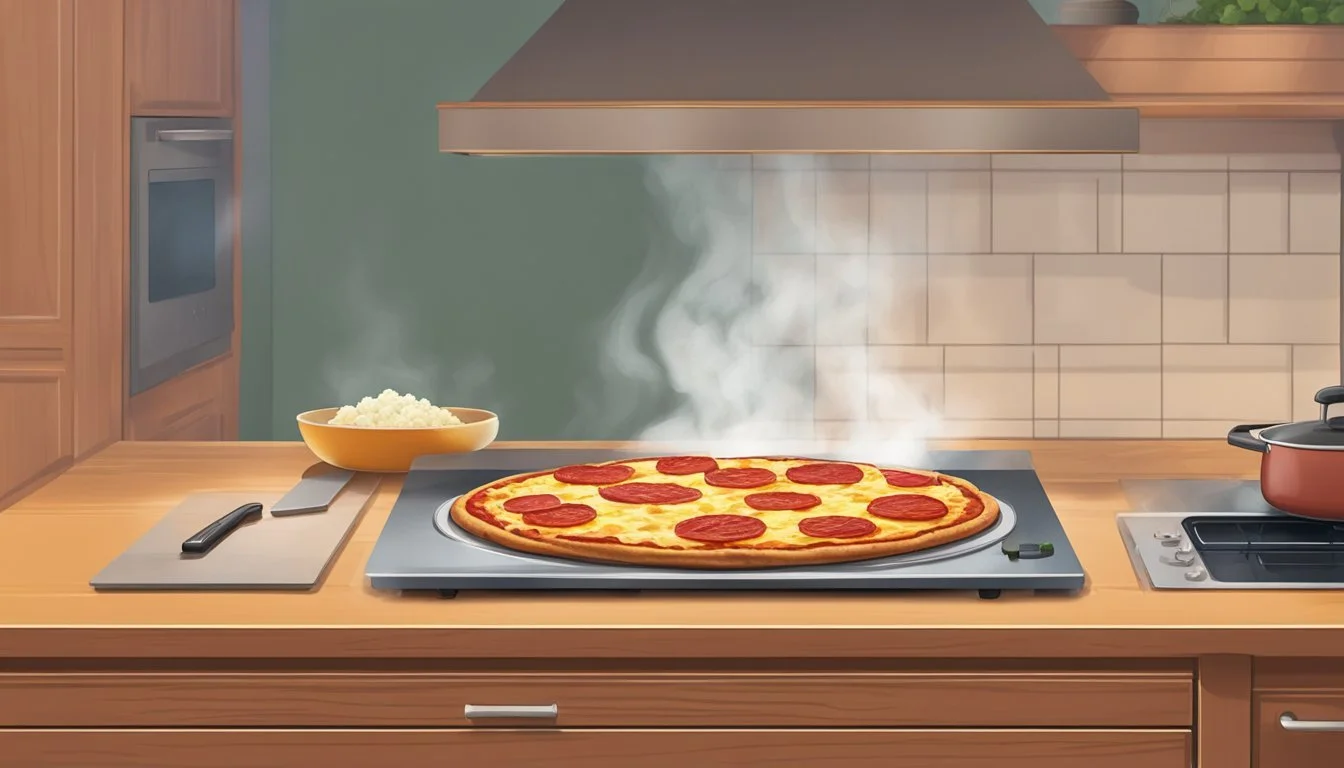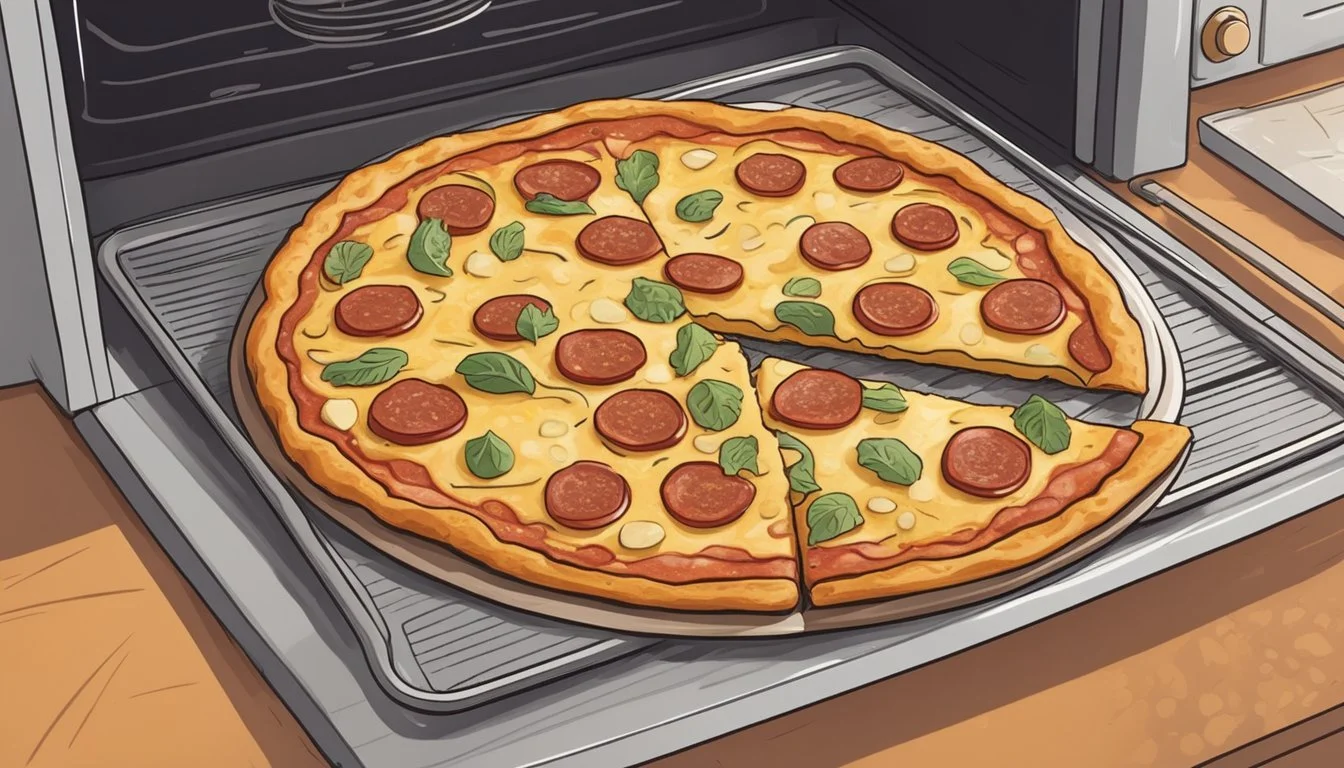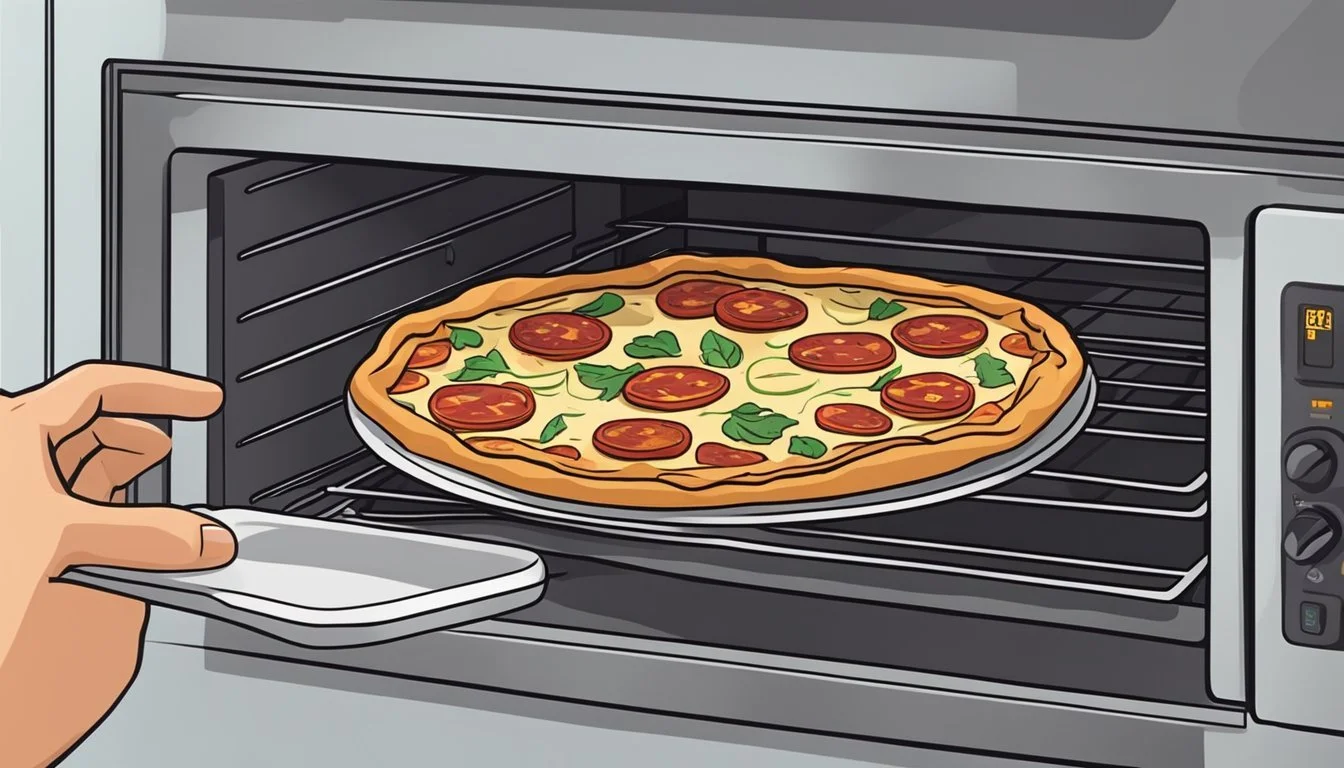How to Reheat Cauliflower Crust Pepperoni Pizza for Optimal Taste and Texture
Reheating cauliflower crust pepperoni pizza can be tricky, but it doesn’t have to be. For those who love the crispy texture and flavorful bite of their leftover pizza, using the right reheating method is crucial. The best way to bring your pizza back to life is by using a skillet over medium heat, which helps to keep the crust crispy and the cheese perfectly melted.
In just a few minutes, you can enjoy a slice that tastes almost as good as when it was first baked. Place your leftover pizza in a skillet with a bit of olive oil or cooking spray to prevent sticking. Cook with a lid on for about 3-4 minutes to achieve the ideal texture and warmth.
If you prefer using an oven, preheat it to 450°F (230°C), and place the cauliflower crust pizza on a baking sheet or pizza stone. Bake for 5-7 minutes until the cheese is bubbly and the crust is crispy. This method is perfect for reheating multiple slices simultaneously.
Understanding Cauliflower Crust
Cauliflower crust is gaining popularity as a gluten-free and low-carb alternative to traditional pizza crust. This section explores its composition, benefits, and what to consider about its texture and flavor.
Composition and Benefits
Cauliflower crust typically consists of cauliflower rice, egg, cheese, and various herbs and spices. Cauliflower rice, made by grating fresh cauliflower, serves as the base. Egg acts as a binder to keep the crust together.
Parmesan cheese and other types of cheese add flavor and help with the binding process. The addition of herbs and garlic enhances the taste profile, making it more appealing.
One of the primary benefits of cauliflower crust is that it is gluten-free, which is great for those with gluten intolerance. It is also low-carb, making it a suitable option for those following keto or other low-carbohydrate diets.
Texture and Flavor Considerations
The texture of cauliflower crust can be slightly different from traditional pizza crusts. It often has a more delicate and less crunchy texture since it doesn't contain gluten.
Proper preparation ensures the crust holds together well and doesn't crumble. Baking the crust thoroughly before adding toppings helps achieve a firmer base.
The flavor is often more complex due to the addition of herbs, garlic, and cheese. The cauliflower itself provides a neutral taste that can be easily complemented by a variety of toppings.
For those used to regular pizza dough, the change in texture might take some getting used to. However, the unique taste and health benefits could make it a worthy alternative.
Preparing Pizza for Reheating
Ensuring that leftover cauliflower crust pepperoni pizza is stored correctly and brought to the right temperature before reheating can make a significant difference in its taste and texture.
Storage Tips
To keep cauliflower crust pepperoni pizza fresh, proper storage is crucial. Place the leftover slices in an airtight container to prevent them from absorbing fridge odors. This also keeps the pizza sauce and toppings from drying out.
Refrigerate the pizza promptly. Ideally, it should be stored within two hours of being cooked to maintain its quality and safety. When stored correctly in the refrigerator, the pizza should stay good for up to four days.
If you have many slices, it is better to layer them with parchment paper between each slice. This helps maintain the crispiness of the crust and avoids sticking.
Bringing Pizza to Room Temperature
Before reheating, allow the pizza to come to room temperature. Transitioning directly from the refrigerator to a hot oven can lead to uneven heating. It can be beneficial to let the pizza sit out for about 10-15 minutes.
This step helps the crust re-crisp better and ensures the toppings heat evenly. Checking that the pizza sauce and cheese are not too cold can avoid soggy or burnt parts.
Allowing the pizza to warm a bit also ensures it doesn't spend too much time in the oven, helping to preserve the texture of the cauliflower crust.
Reheating Techniques
Different methods can be used to reheat cauliflower crust pepperoni pizza to achieve a delicious and crispy result. These methods vary in terms of equipment and time, but each one aims to preserve the texture and flavor of the pizza.
Oven Method
Preheat the oven to 375°F (190°C). Place a piece of parchment paper on a baking sheet for easy cleanup. Arrange the pizza slices on the baking sheet and use aluminum foil to cover them lightly. This helps retain moisture while preventing the crust from getting too hard. Bake for about 10 minutes, or until the cheese is bubbly and the crust is crispy. For an extra crisp finish, remove the foil in the last 2 minutes of baking.
Skillet Method
Heat a non-stick skillet over medium heat. Place the pizza slice in the skillet without adding any additional oil. Cook for around 2 minutes to warm the crust. To ensure the toppings heat evenly, add a few drops of water to the pan away from the pizza and cover with a lid to create steam. This keeps the cheese melted and the toppings warm without making the crust soggy.
Toaster Oven Technique
Set your toaster oven to 375°F (190°C). Place the pizza slice on the toaster rack or a small baking sheet. Aluminum foil can be used as a liner for easier cleanup. Reheat for approximately 5 minutes until the cheese is melted and the crust is crispy. Monitor closely to prevent overcooking, especially with thinner crusts.
Microwave Tips
Reheating pizza in the microwave can be tricky due to potential sogginess. Place the pizza slice on a microwave-safe plate. To maintain a crispy crust, place a cup of water in the microwave next to the pizza. This helps distribute heat evenly. Heat on medium power in 30-second increments until the cheese has melted and the slice is properly warmed. Avoid overcooking to prevent a rubbery texture.
Air Fryer Use
Preheat the air fryer to 350°F (175°C). Line the basket with parchment paper to keep it clean. Arrange the pizza slices in a single layer without overlapping. Reheat for 3-5 minutes until the crust is crispy and the cheese is melted and bubbly. Check frequently to avoid burning, as air fryers can cook quickly and unevenly.
Using one of these methods, provides various techniques to achieve a warm, crispy cauliflower crust pepperoni pizza. Experiment to see which works best for you.
Maintaining the Perfect Crust
To retain the ideal texture of your cauliflower crust pepperoni pizza during reheating, it's crucial to follow precise steps to avoid a soggy crust.
Avoiding Soggy Crust
To prevent a soggy crust, use a preheated oven set to 375°F (190°C). Place the pizza directly on a baking sheet or pizza stone for better air circulation.
Avoid microwaving as it traps moisture, leading to a mushy crust.
Use a skillet with a lid as an alternative method. Heat a skillet over medium heat, add the pizza, cover, and cook for 3-4 minutes. This retains crispness without drying out the toppings.
For extra crispiness, finish by broiling for 1-2 minutes. Adjust the distance from the broiler to avoid burning the cheese.
Enhancing Flavor Post-Reheat
Reheating cauliflower crust pepperoni pizza can make it lose some of its original flavor. Adding fresh toppings, optimizing cheese melt, and utilizing herbs and spices can greatly enhance its taste.
Adding Fresh Toppings
Adding fresh vegetables like bell peppers, tomatoes, or arugula can elevate the flavor and texture. Fresh toppings add a crispness and vibrant flavor that contrasts well with the reheated pizza.
Fresh basil can also be a great addition, providing a fragrant aroma and fresh taste. For those who enjoy some heat, a sprinkle of red pepper flakes can create a nice spicy kick.
Optimizing Cheese Melt
A smooth and gooey cheese enhances the comfort and taste of reheated pizza. Before reheating, sprinkle a bit more mozzarella cheese on top of your pizza. This ensures that you get a fresh, melted layer that makes each bite enjoyable.
Consider adding a small amount of olive oil to help the cheese melt evenly without drying out. This also infuses a subtle richness.
Utilizing Herbs and Spices
Herbs and spices play a crucial role in bringing life back to a reheated pizza. Dried oregano and dried basil can be sprinkled on to mimic the original flavors. Garlic powder adds a deep, savory note that complements the cheese and pepperoni.
For an extra touch, drizzle a little olive oil infused with garlic or fresh basil right before serving. This enhances the flavor profile and offers a sophisticated touch to a simple dish.
Health and Dietary Considerations
Cauliflower crust pepperoni pizza offers a nutritious alternative to traditional pizza, particularly for those seeking lower carbohydrate content or higher protein intake. This section analyzes the caloric and carbohydrate information, along with the protein content of cauliflower crust pizza, providing insight into its dietary benefits.
Caloric and Carbohydrate Information
Cauliflower crust pizza is a popular choice for individuals following low-carb diets. Typically, a serving of cauliflower crust pepperoni pizza contains fewer calories compared to its traditional counterpart. The carbohydrate content is also significantly lower because the crust is made from cauliflower rather than wheat flour.
For example, a typical slice of cauliflower crust pizza might contain around 150-200 calories and 10-15 grams of carbohydrates. In contrast, a traditional pepperoni pizza slice can contain 250-300 calories and 30-40 grams of carbs. This reduction is beneficial for those managing their carbohydrate intake, such as individuals with diabetes or those on ketogenic diets.
Protein Content
Cauliflower crust pizza tends to be higher in protein compared to traditional pizza crusts made from refined wheat flour. This is due to the use of cauliflower and additional ingredients like cheese and eggs in the crust mixture.
On average, a slice of cauliflower crust pepperoni pizza might offer around 10-15 grams of protein per serving. Traditional crust pizzas, on the other hand, provide significantly less protein, typically around 8-10 grams per slice. The higher protein content can aid in muscle repair and maintenance, making cauliflower crust pizza an appealing choice for fitness enthusiasts and those looking to increase their protein intake.
These nutritional advantages make cauliflower crust pepperoni pizza a versatile and healthy alternative without sacrificing taste or satisfaction.
Serving Recommendations
Enhancing the experience of enjoying reheated cauliflower crust pepperoni pizza can make a significant difference. Consider pairing the pizza with complementary side dishes and focus on presentation to elevate your meal.
Pairing with Side Dishes
Pair cauliflower crust pepperoni pizza with light and refreshing sides to balance the flavors. Simple salads with mixed greens, cherry tomatoes, and a light vinaigrette are excellent options. Another great pairing is roasted vegetables, such as zucchini or bell peppers, seasoned with herbs.
Serve fresh fruit slices like watermelon or pineapple for a touch of sweetness. Low-carb snacks like cucumber sticks or cheese cubes can complement the meal. For a heartier side, garlic butter mushrooms can add a savory dimension without overwhelming your palate.
Presentation Tips
Present the reheated cauliflower pizza in a visually appealing manner. Slice the pizza uniformly and arrange the slices on a wooden board or a stylish serving platter. Garnish with fresh basil or oregano for a pop of color.
To keep the pizza warm at the table, use a pizza stone or baking sheet with a warming feature. Individual serving plates with a few slices of pizza and a small side salad or vegetable sticks can enhance the dining experience.
Add small bowls of dipping sauces like marinara or garlic aioli to elevate the serving presentation. Attention to these details can make even a simple leftover pizza feel special and enjoyable.







